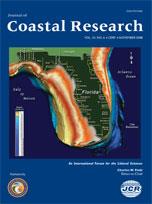QuickBird false color satellite imagery was evaluated for distinguishing black mangrove [Avicennia germinans (L.) L.] populations on the south Texas Gulf Coast. The imagery had three bands (green, red, and near-infrared) and contained 11-bit data. Two subsets of the satellite image were extracted and used as test sites. Supervised and unsupervised image analysis techniques were used to classify the imagery. For the supervised classification of site 1, black mangrove had a producer's accuracy of 82.1% and a user's accuracy of 95.8%, whereas for the unsupervised classification, black mangrove had a producer's accuracy of 100% and a user's accuracy of 60.9%. In the supervised classification of site 2, black mangrove had a producer's accuracy of 91.7% and a user's accuracy of 100%, whereas in the unsupervised classification, black mangrove had a producer's accuracy of 100% and a user's accuracy of 85.7%. These results indicate that QuickBird imagery combined with image analysis techniques can be used successfully to distinguish and map black mangrove along the south Texas Gulf Coast.
How to translate text using browser tools
1 November 2008
Using High Resolution Satellite Imagery to Map Black Mangrove on the Texas Gulf Coast
J. H. Everitt,
C. Yang,
S. Sriharan,
F. W. Judd
ACCESS THE FULL ARTICLE
accuracy assessment
Avicennia germinans
computer image analysis
QuickBird satellite imagery
remote sensing
Texas Gulf Coast





